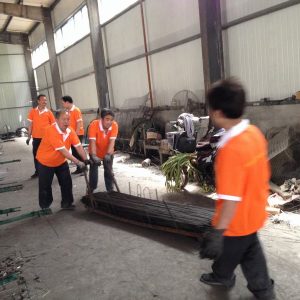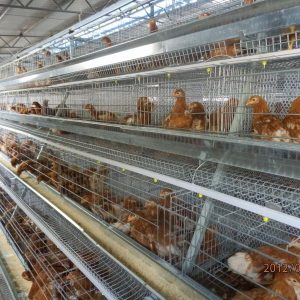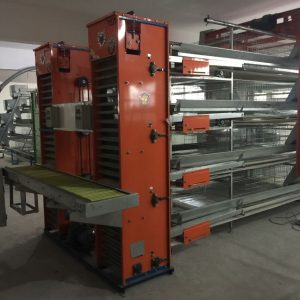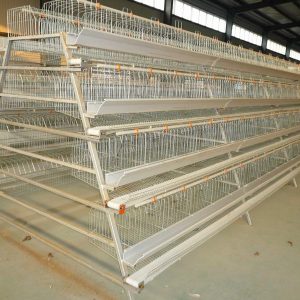
The key points of pheasant breeding technology
Due to the high nutritional value of pheasants, the meat of pheasants is not only tender but also delicious, but also has strong game flavor and high protein content, so it is very popular among customers. At the same time, the feathers of the male pheasant are gorgeous, and also have a very high ornamental value. It can be seen from the above that the economic value of pheasants is still very considerable. So is pheasant breeding technology easy to learn?
Pheasant breeding technology
A. Pheasant breeding management technology in young stage
1) Drink water and start food at the right time: The young pheasants start to eat 24 to 36 hours after they are out of the shell. Drink water before starting. It is best to add 5% glucose or 0.1% potassium permanganate to the drinking water. Tune to drink water as soon as possible, and start the food 1 to 2 hours after feeding. The starter should be soft, good palatability, rich in nutrients and easy to digest. It is best to feed the wet mix for the first 3 to 5 days. Remove the remaining material before each addition. Introducing food every 2 to 3 hours when starting, gradually increase the interval, feeding 6 times a day for 0 to 2 weeks, and 5 times a day for 3 to 4 weeks. Generally, as the age increases, the feed intake also increases. When it grows close to the adult weight, the feed requirement tends to stabilize.
2) Temperature and humidity control: Suitable brooding temperature is: 35~34℃ for 1-3 days, 33~32℃ for 4~7 days, 31~28℃ for 2 weeks, 27~24℃ for 3 weeks, 4 weeks Age is 23~22℃, keep normal temperature after 5 weeks of age. The relative humidity is 65% to 70% for 1-10 days of age, and 55% to 65% after 11 days of age.
3) Density: As the age changes, its weight and water demand will also change accordingly. The feeding density should be adjusted in time to increase the number of water and food tanks. The density when raising chicks in cages or box brooding is: 1~10 days old 50~60 birds/square meter, 10~20 days old 30~40 birds/square meter, after which they can be transferred into three-dimensional cages (4 for egg pheasants brooding Layer cage), 21 to 42 days old 20-30 per square meter, 43 to 60 days old 10-20 per square meter.
4) Ventilation and indoor environment control: Poor indoor air circulation and excessive ammonia concentration will directly affect the growth and development of pheasants, and can induce chronic respiratory diseases, eye diseases and other diseases. Frequent ventilation should be used to keep the indoor air fresh, clean the manure in time, sweep the ground, maintain a suitable temperature, bring chickens to disinfect regularly, and evacuate the density in time. Improving the indoor environment is one of the important measures to improve the survival rate of young pheasants.
5) Light time control: The young pheasants have less strict requirements for light. The first chicks keep 24 hours of light for 1 to 3 days, and 20 to 22 hours of light for 4 to 7 days. After that, quickly switch to natural light according to the feeding situation of the young pheasants. . When transferring to the three-dimensional cage around 3 weeks, the first night should be full of light to make the young pheasants adapt to the new environment as soon as possible. It is advisable to use 3 watts/m² more. After most of the pheasants eat and drink, you can Use natural light.
6) Immunization: Develop an immunization program based on the situation in the field.
B. Pheasant breeding management technology in adult stage young pheasant cages can be transferred to ground level breeding or into breeding pheasant cages for 6 to 7 weeks. The period of time to 18 weeks of age is the fastest growth and development stage for pheasants, with an average daily gain of 10 to 15 grams. By 20 weeks of age, it is basically close to the weight of an adult pheasant. Therefore, feeding management and feeding at the age of 6-20 weeks is the key to ensuring the growth and development of the breeding pheasants. While doing a good job in daily management, the following points should also be noted:
1) Transfer time and attention issues: Generally, chicks hatched from the end of March to mid-April are transferred to the flock when they are raised to 6-8 weeks of age, and the young pheasants hatched in summer can be transferred to the flock when they are raised to 5-6 weeks of age. Three days before the transfer, a special person should be assigned to be on night shift and be given 24-hour light. When transferring groups, attention should be paid to separate and rearing weak chicks and eliminate sick chicks in time. One to two weeks after turning to the ground, choose warm and windless weather, open the doors and windows, and let them go to the indoor and outdoor sports grounds for short-term activities. Later, they will gradually extend and drive indoors at night.
2) Reserve breeding pheasant feeding restriction: Determine the breeding pheasant reserved for breeding. In addition to the preliminary selection at the age of 6-8 weeks, the weight must be controlled to prevent over-fat, so as to ensure a higher egg production rate and Fertilization rate. The specific measures are: reduce the protein and energy content in the diet; increase the amount of crude fiber and green feed; reduce the number of feedings; increase the amount of exercise; limit the amount of feed, etc.
3) The second beak cut off, preventing the occurrence of pecking habit: Pheasants are more wild and like to peck foreign objects. Breeding pheasants grow rapidly. If certain nutrients are lacking, the environment is not ideal, or the density is too high during this period, pecking will be more likely to occur. In order to effectively prevent pecking, a second beak cutting can be performed between 5 to 10 weeks of age. The method is the same as that of domestic chickens.
4) Prohibition of moldy and degraded feed to prevent aspergillosis: Pheasants in the early stage of breeding are susceptible to Aspergillus, and the disease has a high incidence and mortality. Therefore, care should be taken to prohibit moldy and degraded feed and moldy bedding in feeding management. Control the environment in the house, maintain the required humidity, and often use peracetic acid to disinfect the chickens. Use a flamethrower to burn the ground and burnable appliances before transferring to groups to prevent the occurrence of this disease.



